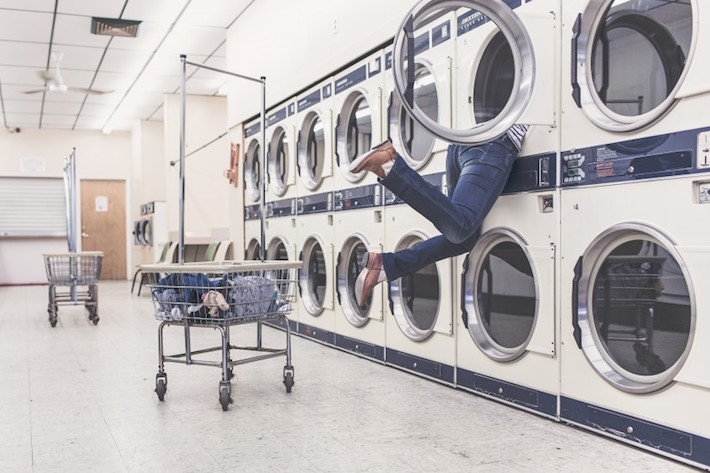
The healthiest way to dry your clothes is old school (and we love it)
Last updated on May 23rd, 2022
Your dryer is one of the greediest appliances in your home. Aside from your refrigerator, it guzzles electricity faster than every other appliance in your household.
With about two out of every 10 Australians unable to pay their electric bill at least once a year because they can't afford it, it's about time you said “Adios!” to the electrical dryer and opt for the healthier, cheaper option of line-drying your clothes.
We've put together 5 great reasons why you should start hanging your clothes on the line and disconnect that electric dryer for good.
Meanwhile, if you think your energy bill is too high, submit your complaint to us and we'll get your energy company to check it over. If you don't understand your bill, we’ll get you an explanation. Click here to submit your complaint or question.
1. Line-drying kills bacteria
Bacteria thrive in a damp environment and that's why they love wet laundry. When you line-dry your clothes, the sun's ultraviolet rays kill the microscopic invaders as your threads dry out under its light. One study by an American university showed that one minute of UV exposure killed 94% of bacteria tested. After 30 minutes, none of the bacteria survived.
We recommend – Dry your clothes near midday so the sun's UV rays can penetrate your clothes and kill all bacteria.
2. Dryers consume lots of energy
According to South Australia's Water, Energy and Environment department, the average Australian family's dryer is costing them between $6.30 and $33.60 every three months for one load per week based on a kW/h rate of $.34.
One wash a week works for someone who lives alone but not that’s not a realistic figure for a family. At three loads of laundry per week, the average Australian family will pay $100 every three months just to dry their clothes with an energy-efficient dryer.
We recommend – Change your mindset; using a dryer is now a luxury not a regular way to dry.
3. Line-drying is kind to the environment
The average dryer dumps about a ton of carbon dioxide into the atmosphere each year. The average clothesline? None. And on top of that, clothes last longer when dried on the line because they don't endure the abuse of high-temperature, high-movement dryer drums.
We recommend – Use plastic clothes pegs. Wooden ones stain over time and transfer their colour to your clothes.
4. Energy-efficient dryers are very expensive
If you want to buy for an energy-efficient dryer that will cost you under $7 per quarter to run, be prepared to pay upfront for long-term savings.
Appliances Online's best-selling dryer is $356 and has an energy rating of 2 stars, which means it's a pretty inefficient machine. You'll end up paying closer to $33 per quarter for one wash per week. The site's cheapest 6-star energy rated (the best) dryer, on the other hand, sells for $1,618 and costs about $6 per quarter to run for one wash per week.
A family who washes clothes three times per week with the cheaper 2 star dryer will spend, over the course of the next five years, almost $2000 (or $400 per year) just to dry their clothes.
We recommend – If you buy a dryer, buy a 6-star model. Over the course of five years, you'll spend about $560 less (including initial purchase and operating costs) than you would with a cheaper 2-star model.
5. Line-drying is kinder to your health
There's no need for a fabric softener when you let the sun and fresh air work their magic. That's good news, too – fabric softeners can contain a host of chemicals linked to various illnesses ranging from cancer, breathing problems and nervous system disorders.
We recommend – Add a ½ cup of vinegar to your next load of laundry. It will keep your clothes from getting stiff and the odour will disappear during the drying time.
Looking for more ways to save on your power bill? Check out our tips here.
Have we convinced you to switch to line drying? Let us know in the comments below.






